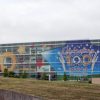calsfoundation@cals.org
Washington Lafayette Gammage (1828?–1865?)
Washington Lafayette Gammage served as a medical officer with the Fourth Arkansas Infantry Regiment during the Civil War. During the conflict, he published The Camp, the Bivouac, and the Battle Field, a history of the regiment from the unit’s organization up until December 1863. The work details the experiences of the men of the regiment along with giving detailed reports of the battles that the unit participated in during the period.
Little is known of Gammage’s early life. He appeared in the 1850 federal census in Cherokee County, Texas. An Alabama native, he was twenty-two at the time of the census, placing his birth year around 1828. He graduated from the University of Louisville Medical School in 1849 and worked in Texas as a physician. In 1856, he married Sarah “Sallie” Everett, and the couple would have four children, one of whom lived to adulthood. In the 1860 census, Gammage appears as a physician in Rusk, Cherokee County, with $3,000 of real estate. Gammage began his writing career during the antebellum period, with three articles published in the New Orleans Medical and Surgical Journal between 1854 and 1857.
Following secession in 1861, Gammage joined a local company known as the Lone Star Defenders on May 1. The unit became part of the Third Texas Cavalry, also known as the South Kansas-Texas Mounted Volunteers. Moving to Missouri, the regiment contributed to the Confederate victory at the Battle of Wilson’s Creek on August 10, 1861.
Formed from companies raised in Calhoun, Hempstead, Montgomery, Pike, Lafayette, and Polk counties in Arkansas, the Fourth Arkansas Infantry organized in Lawrence County, Missouri, on August 17, 1861. The following day, the regimental staff was formed, with Gammage as the surgeon of the unit. It is unclear how Gammage became associated with the regiment, but other staff billets were filled by men not associated with the companies of the unit, including two from Washington County and an Englishman.
Led by Colonel Evander McNair, the regiment served in southwestern Missouri and northwestern Arkansas until early 1862, when it participated in the Battle of Pea Ridge. Gammage remained on the battlefield for more than three weeks, caring for the wounded of his regiment and other units. He worked alongside Federal troops tasked with gathering their wounded from the field. The bulk of Confederate forces in Arkansas crossed the Mississippi River in the spring of 1862, and Gammage rejoined his regiment at Memphis. Moving to Mississippi, the Confederate army reorganized while Gammage served as the acting chief surgeon on a medical exam board, tasked with discharging ill soldiers.
In late summer, the regiment participated in the Kentucky Campaign and fought at the Battle of Richmond. Gammage served as the brigade surgeon from 1862 until the end of the war. That winter, the regiment fought at the Battle of Murfreesboro. Serving in the Vicksburg Campaign, the Fourth Arkansas fought at the Battle of Jackson. In late August, Gammage returned home to Texas on a furlough and did not participate in the Battle of Chickamauga, where his regiment suffered fifty-five casualties. The regiment returned to Mississippi after the battle, and Gammage rejoined the unit.
The Fourth Arkansas continued to serve in the Western Theater for the remainder of the war, consolidating with other Arkansas units as losses mounted. Additional battles included the Atlanta Campaign, the Battles of Franklin and Nashville, and the Battle of Bentonville. The unit surrendered with the Army of Tennessee in North Carolina in 1865, with the members of the unit paroled on May 1.
Gammage published The Camp, the Bivouac, and the Battle Field in Selma, Alabama, in 1864. The work is based on his own recollections, portions of his journal, and official reports following battles. Ending on December 10, 1863, the work does not cover the last eighteen months of the war. It is unknown how many copies were printed, and the first edition did not include covers. When reprinted in the mid-1950s, only three copies of the original printing could be located.
Gammage survived the war but was reportedly killed in 1865 in an accident in Mobile, Alabama, on his way home to Texas. It is possible that he died in a gunpowder magazine explosion in Mobile on May 25, 1865. The location of his body is not known. News of his death had not reached Texas by the following year, as members of a local Masonic Lodge posted an advertisement in a Dallas newspaper to gather information on his whereabouts.
Sarah Gammage did not remarry after the war and applied for a pension from the state of Texas based on her husband’s war service. She died on September 26, 1908, and is buried in Rusk, Texas. She was survived by her son, Ector Gammage.
For additional information:
Gammage, Washington. The Camp, the Bivouac, and the Battle Field. Little Rock: Arkansas Southern Press, 1958.
———. “Case of Twins, One Being a Monstrosity.” New Orleans Medical and Surgical Journal 13 (1856/7): 15–17.
———. “Dysentery; its history and treatment.” New Orleans Medical and Surgical Journal 13 (1856/7): 451–457.
———. “Topography, Settlement, Climate, Population, Botany and Diseases of Cherokee County, Texas.” New Orleans Medical and Surgical Journal 11 (1854/5): 641–643.
Hale, Douglas. “Life and Death among the Lone Star Defenders: Cherokee County Boys in the Civil War.” East Texas Historical Journal 29, no. 2 (1991): 26–40.
David Sesser
Southeastern Louisiana University
 Civil War through Reconstruction, 1861 through 1874
Civil War through Reconstruction, 1861 through 1874 Health and Medicine
Health and Medicine Military
Military




Comments
No comments on this entry yet.